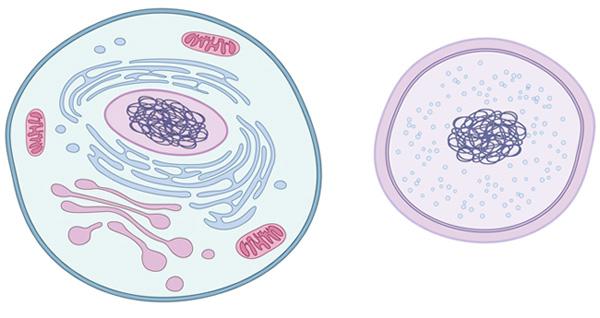Exploring the Cellular Foundations of Sexual Identity: A Scientific Insight
Recent advancements in cellular biology have shed light on the essential role that our cells play in shaping sexual identity. While many people often conflate biological aspects with personal beliefs, researchers are revealing that the processes involved in sexual differentiation are fundamentally rooted in genetic and biochemical activities within our cells. This article examines recent discoveries that demonstrate how cellular structures inherently reflect markers of sexual identity, reinforcing that this understanding is based on scientific research rather than cultural narratives. As discussions about gender identity and biological determinism continue to evolve, emerging insights into cellular sexual identity prompt a reevaluation of how we view the relationship between biology and personal identity.
The Cellular Foundations of Sexual Identity
The connection between our cells and sexual identity is fundamentally biological rather than socially constructed. Central to this understanding are chromosomes, which dictate genetic traits and significantly influence sexual characteristics. Humans typically possess 23 pairs of chromosomes, including one pair designated as sex chromosomes—XX for females and XY for males. These chromosomal differences lead to distinct biological pathways affecting everything from hormone production to physical attributes. Recent studies suggest that even individuals with intersex variations—who may exhibit atypical chromosomal configurations—still possess a biological basis for their identities, indicating that sexual identity is complexly woven into our cellular framework.
The expression of genes within these chromosomes plays a crucial role in determining our sexual identities as well. The process known as gene expression governs how gender-related traits develop and manifest physically. Environmental factors and hormonal influences during critical developmental periods further complicate this biological landscape. Ongoing scientific investigations challenge traditional binary notions of sex by showcasing diversity through cases like androgen insensitivity syndrome, which illustrates that our biological identities can be more intricate than conventional narratives imply. This perspective not only enhances our comprehension of human diversity but also underscores the necessity of examining sexual identity through a scientific lens instead of ideological frameworks.
Impact of Cellular Sexual Identity on Healthcare and Society
The implications surrounding cellular sexual identity extend beyond mere academic interest; they hold significant potential for transforming medical practices and societal norms alike. Research indicates that cells exhibit inherent characteristics related to sex, influencing their behavior and interactions within various contexts. For example, this knowledge could revolutionize approaches to personalized medicine, particularly concerning treatments involving hormones or genetic therapies tailored specifically for individual patients based on their unique cellular profiles rather than solely their assigned sex at birth.
This evolving field may lead to breakthroughs aimed at addressing health conditions disproportionately affecting one gender over another, thereby bridging longstanding gaps in healthcare access.
The ramifications stemming from these scientific revelations also challenge established societal constructs regarding gender roles.
Acknowledging the possibility that cells embody a form of sexual identity encourages deeper discussions about gender dynamics.
This shift could inspire changes in policy as healthcare systems begin integrating these insights into educational programs aimed at public health initiatives.
Promoting Inclusive Science Education Regarding Sexual Identity
Educational institutions globally must adapt curricula to embrace an inclusive framework recognizing both science’s role alongside diverse expressions of sexuality.
This evolution should encompass not only the biology behind sex differentiation but also address multifaceted dimensions surrounding gender identities.
An integrated approach will empower students by providing them with an understanding grounded in science while fostering respect for varied perspectives.
- Culturally Relevant Curriculum Design: Courses should encompass topics such as genetics related to sex differentiation alongside LGBTQ+ history while exploring social implications tied closely with evolving concepts around gender.
- Tailored Professional Development: strong> Educators require training focused on sensitively navigating these subjects so they can facilitate engaging classroom dialogues effectively.
- < strong>Diverse Language & Resources: strong> Educational materials ought reflect an array encompassing different identities using affirming language throughout all content areas.
Implementing such recommendations across educational settings transcends being merely progressive—it represents an essential step towards scientifically informed discourse regarding sexuality.
A practical illustration highlighting intersections between biology & social constructs follows below:
| Biological Aspect | Social Construct |
|---|---|
| Chromosomal Differences (e.g., XX vs XY) | Gender Identities (man/woman/non-binary) |
| Hormonal Influences (testosterone/estrogen) | Gender Expression (masculine/feminine/androgynous) |
| Physical Characteristics | Societal Gender Roles
Looking Ahead: The Future Landscape Of Understanding Sexual Identity Through ScienceThe investigation into how sexuality manifests at a cellular level highlights both intricacies inherent within human biology while simultaneously challenging prevailing perceptions surrounding genders today. |
